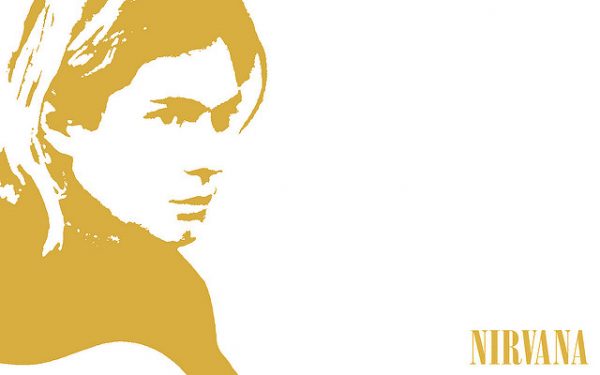
In 1990, the popular rock music scene was in total disarray — not a single rock album topped the charts. By January of 1992, Nirvana’s Nevermind surpassed Michael Jackson’s Dangerous to the top spot of the Billboard 200, transforming the state of rock music forever and defining the 90s teen generation. On its recent 25th anniversary, the album remains one of the highest selling rock albums of all time, and is thought to represent not only a shift in music, but in commercial entertainment as well.
Sociologist Ryan Moore notes that the rise of Nirvana and other “grunge” bands demonstrated to major music labels that notions of anti-corporatism, rebellion, and authenticity could be co-opted into a larger marketing campaign to sell a variety of products to youth. Bands like Nirvana were so successful because they personified a collective feeling in the 1990s and once advertisers and marketers capitalized on this notion, expressions of deviance permeated mainstream culture.
- Ryan Moore. 2005. “Alternative to What? Subcultural Capital and the Commercialization of a Music Scene.” Deviant Behavior 26(3): 229-252.
- Ryan Moore. 2009. Sells Like Teen Spirit: Music, Youth Culture, and Social Crisis. NYU Press.
Why did bands like Nirvana resonate so well with teenagers during the 1990s? Musical tastes can serve as a form of identity construction and the exclusivity of a collective of people, and Nirvana’s image of rebellion was a resource for youth to distinguish themselves from other generations. Although grunge developed originally as an avant-garde or experimental genre, once it seeped into the local music scene of Seattle and evolved into its industry form, it was already well established in the collective identity of youth in the United States.
- Bethany Bryson. 1996. “‘Anything but Heavy Metal’: Symbolic Exclusion and Musical Dislikes.” American Sociological Review 61(5): 884-899.
- Omar Lizardo and Sara Skiles. 2016. “The End of Symbolic Exclusion? The Rise of ‘Categorical Tolerance’ in the Musical Tastes of Americans: 1993–2012.” Sociological Science 3: 85-108.
- Jennifer Lena and Richard Peterson. 2008. “Classification as Culture: Types and Trajectories of Music Genres.” American Sociological Review 73(5): 697-718.
Why do albums like Nevermind still resonate in the modern day? Research shows that people tend to view their memories from adolescence as especially important. At the same time, representations of major events or famous people change or develop with each new generation. Abraham Lincoln, for example, was commemorated as a “self-made man” in the years following emancipation; yet, in the rise of the civil rights movement, newer generations viewed him as the “Great Emancipator.” Thus, we can expect Nirvana’s significance to be much different for teens today than in the early 1990s.
- Howard Schuman and Jacqueline Scott. 1989. “Generations and Collective Memory.” American Sociological Review 54: 359-384.
- Barry Schwartz and Howard Schuman. 2005. “History, Commemoration, and Belief: Abraham Lincoln in American Memory, 1945-2001.” American Sociological Review 70(2): 183-203.

Comments